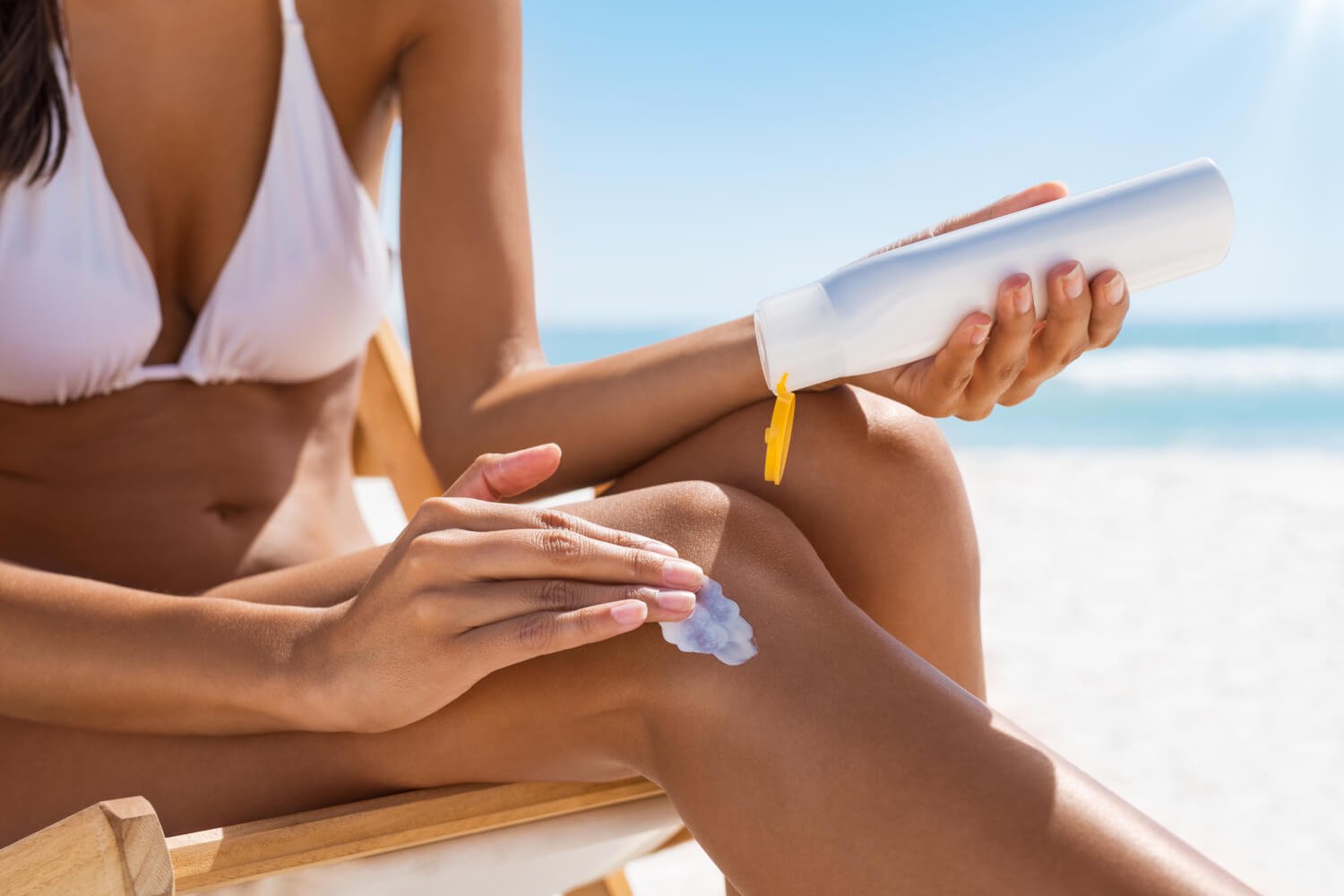
When you’re picking out a sunscreen–whether it’s for a holiday or for everyday use–one of the decisions you’ll need to make is which SPF rating to go for. Will you stick with common ratings like SPF30 or SPF50, go lower, or try something even higher? What’s the highest SPF sunscreen you can even buy? And does it actually make a difference? In this post, we’ll give you the answers you seek–and help you choose the right SPF for your needs.
What is SPF?
SPF means “Sun Protection Factor”, and it measures the amount of protection that a sunscreen offers against UVB radiation–which is the type of radiation responsible for burning your skin.
How does long SPF last?
There’s a longheld belief that the SPF number tells you how long you can stay in the sun without burning compared to if you weren’t wearing any sunscreen at all. Say your skin normally starts to redden (aka “burn”) after 1 hour in the sun; SPF30 would, in theory, protect you 30 times longer, or for 30 hours.
This, as you might imagine, is a dangerous way to think about SPF. Imagine spending 30 hours in the sun without reapplying your sunscreen! It simply wouldn’t be safe, and for good reason: the intensity of sun radiation changes throughout the day, most people don’t apply enough sunscreen to start with, and what you do apply gradually wears off from rubbing, sweating, swimming, or just the formula breaking down over time.
This is why the standard recommendation is to reapply your sunscreen every two hours, especially after swimming, sweating, or any kind of physical activity outdoors.
What is the highest SPF sunscreen?
When it comes to the highest of the high SPFs, SPF100 is about as high as you can go in terms of comercially available sunscreen–but that doesn’t mean it’s easy to find, or that it offers a dramatic improvement over the much more common SPF30, SPF50, or SPF50+ options.
It all comes down to how SPF actually works: SPF30 protects the skin from 97% of UVB radiation, SPF50 from 98%, and SPF100 from 99%. The difference gets smaller as the SPF number gets bigger–in other words, the higher the rating, the smaller the gain in protection between levels. SPF100 isn’t twice as protective as SPF50, even though the number might make you think so!
Why can’t you find SPF100 in some countries?
In order to avoid misleading customers–who may think that SPF100 is twice as protective as SPF50, or worse, that SPF100 blocks 100% of UVB radiation, like some sort of impenetrable shield–some countries have legally restricted sunscreen labels to a maximum SPF of 50. Should a product protect against more than 98% of UVB radiation, it’ll be labeled SPF50+.
Is higher SPF always better?
When it comes to deciding whether higher SPF is always better, there are usually two camps: one says “yes, go for the highest SPF you can find” while the other counters “no, it’s not actually worth it, because the difference is so small.”
The honest answer is that it depends–and there’s a lot of nuance to consider. Let’s go through some of the key points:
| Why high SPF may be worth it | Why high SPF may NOT be worth it |
|---|---|
| It provides more protection against UVB radiation; | The increase in UVB protection beyond SPF50 is minimal; |
| Even a slight increase can be beneficial for people with very fair or sensitive skin; | It can create a false sense of security, leading to longer sun exposure and fewer reapplications; |
| It’s useful for those who spend a lot of time outdoors or under intense sunlight. | It may feel thicker or less comfortable on the skin, discouraging regular use and regular reapplication. |
As we read through these key points, we notice an interaction between SPF ratings and application technique. For example, a sunscreen with a very high SPF rating may be thicker and less pleasant to apply, which can lead to patchy application and fewer reapplications throughout the day–which can, in turn, increase the risk of sun damage to the skin.
But the opposite argument is also valid: if we assume from the start that most people aren’t actually very skilled at applying or reapplying sunscreen as directed, wouldn’t it make sense to just choose the highest SPF available? Even a small increase in protection would still be beneficial, right?
In the end, that’s what it comes down to: if everyone applied sunscreen exactly as it’s tested in lab conditions–with thick, even layers, reapplied regularly–then SPF30 would offer solid, reliable protection for most people. But most of us don’t quite follow those rules: we tend to apply too little product, miss spots, forget to reapply, sweat it off during the day, or wipe it away without thinking.
Choosing SPF50 or higher can give you a safety net to account for this, a bit of extra room for mistakes: even if your application isn’t perfect, you’re still likely to achieve a decent level of protection. In short: in theory, SPF30 gets the job done; in practice, SPF50 or 50+ may be better suited to everyday life, where sunscreen application is rarely as perfect as it would be in a lab.
Beauty Writer & Editor


